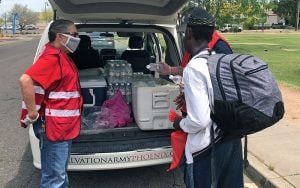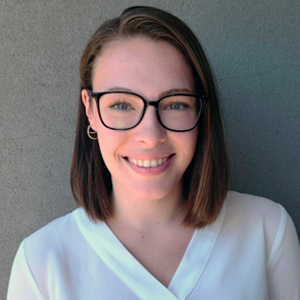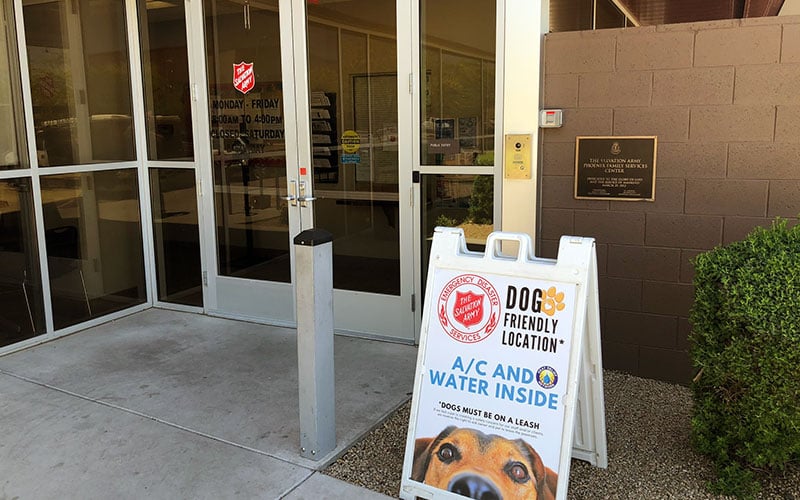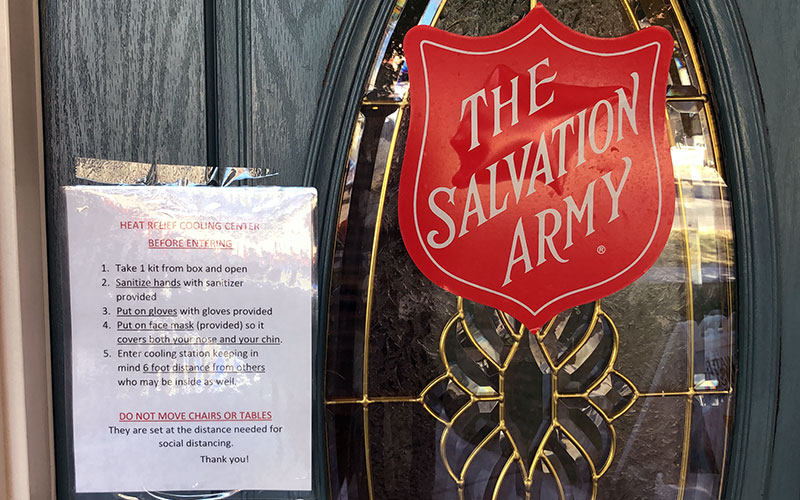PHOENIX – The COVID-19 pandemic means Arizona’s heat-relief programs have added hand sanitizer, gloves and masks to the mix of survival items – water, lip balm, sunscreen and more water – they provide to homeless and vulnerable populations each summer.
Thursday marked the 15th day of excessive heat warnings in Arizona this year, an early start to triple-digit temperatures, which can lead to serious heat related illnesses.
It’s unclear whether the heat chases away the public health threat of the novel coronavirus, which continues to tear through Arizona and the nation. Despite claims from the White House, research has not yet concluded that higher temperatures will decrease infection rates for COVID-19, the respiratory disease caused by the virus.
Coupled with the risks of contracting COVID-19, excessive heat can create deadly conditions for those without shelter. Last year, the heat claimed 197 lives in Maricopa County alone.
“We see people struggling in the heat,” said Maj. David Yardley of the Salvation Army. “We look for the symptoms, you know, of their body not functioning, and we say, ‘Hey, we have a place for you.'”
Municipal governments and volunteer organizations each summer set up about 75 hydration stations and cooling shelters around metro Phoenix. But these groups must balance heat relief with efforts to protect against COVID-19.
“We know there is a possibility that the virus will impact the people that we serve,” said Mike Hanosh, a spokesman for the Society of St. Vincent de Paul. “We absolutely know that if we don’t provide heat relief for members of our community, people will die.”
Heat-relief stations extend aid beyond the homeless population, also serving the elderly and people with mental health illnesses, who, Yardley said, are more likely to underestimate the symptoms of heat-related illnesses and suffer more from them.

The Salvation Army also distributes water from its mobile hydration station, which frequents the homeless encampment outside the Human Services Campus just west of downtown Phoenix. (Photo courtesy of the Salvation Army Southwest Division)
Yardley said traffic to the stations has increased because the pandemic has closed malls, libraries and restaurants, where homeless people used to go for refuge from the sun and a drink of water.
At a Phoenix City Council policy meeting Tuesday, officials decided libraries, senior centers and other municipal buildings will remain closed to slow the further spread of COVID-19. The council also allocated an additional $10 million in federal CARES Act funds to provide pandemic relief to “vulnerable populations,” although it did not specify how that money would be used.
Last week, Mayor Kate Gallego opened part of the Phoenix Convention Center to host a respite center for those experiencing homelessness. The venue remains closed to the public.
Hanosh said the challenge of COVID-19 for St. Vincent de Paul, which organizes food services and distributes donations across Maricopa County, includes allowing fewer volunteers to populate the building, leaving them with a skeleton crew.
For weeks, St. Vincent de Paul has required all who enter their facilities to wear masks and have their body temperature checked, and it is increasing the number of sanitizing stations and reducing the shelter’s capacity to 40 people from 150.
Donations to any heat-relief centers can include such things as gently used hats or a quick bite to eat.
“You’d be surprised,” Yardley said. “A snack can go a long way.”
Heat-relief centers also accept donations to help meet COVID-19 guidelines issued by the Centers for Disease Control and Prevention, including masks, gloves and hand sanitizer. But the most important donation remains water.
“It’s staggering, the amount of water we go through,” Hanosh said.
Here are the locations of heat-relief stations across Maricopa County. Monetary and material donations can be made at any of them.
Salvation Army cooling shelters
These locations complement the mobile units the Salvation Army dispatches to encampments of homeless people around metro Phoenix. Guests are given plastic bags with masks, gloves and hand sanitizer – items that volunteers also must use. Seating is arranged to maintain 6 feet of social distancing.
According to Maj. David Yardley of the Salvation Army’s Southwest division, the distancing regulations reduce the shelters’ capacity enough that the organization may open a new station if the need arises.
Hydration stations*
At designated hydration stations, workers and volunteers collect and distribute water and other donations. Shade and shelter from the sun are not guaranteed here.
Peoria has set up shaded self-service stations outside city buildings. The coolers are cleaned and refilled regularly with cold water, said Kristina Perez, communications manager for the city.
Heat-refuge locations*
These spots provide indoor or shaded relief and include church-run charities and nonprofits, such as St. Vincent de Paul. Spokesman Mike Hanosh said St. Vincent de Paul hopes to set up more outdoor cooling stations in the East Valley in the coming weeks.
*Stars denote locations operated by municipal governments that are subject to Arizona’s COVID-19 regulations, which include the use of masks, gloves and sanitizer, and 6-foot social distancing guidelines.
Heat of the Day Respite Center and Human Services Campus
The campus near 12th Avenue and Washington Street has 470 emergency beds available each night to those experiencing homelessness. Surrounding parking lots have been used to house encampments of those who can’t get indoor relief.
The Heat of the Day Respite Center at the Phoenix Convention Center opened May 29. Buses transport people a few blocks to and from the Human Services Campus to the convention center, where they get shelter, water and lunch and dinner. City and convention center staff will enforce their COVID-19 guidelines, including a ban on personal items.



